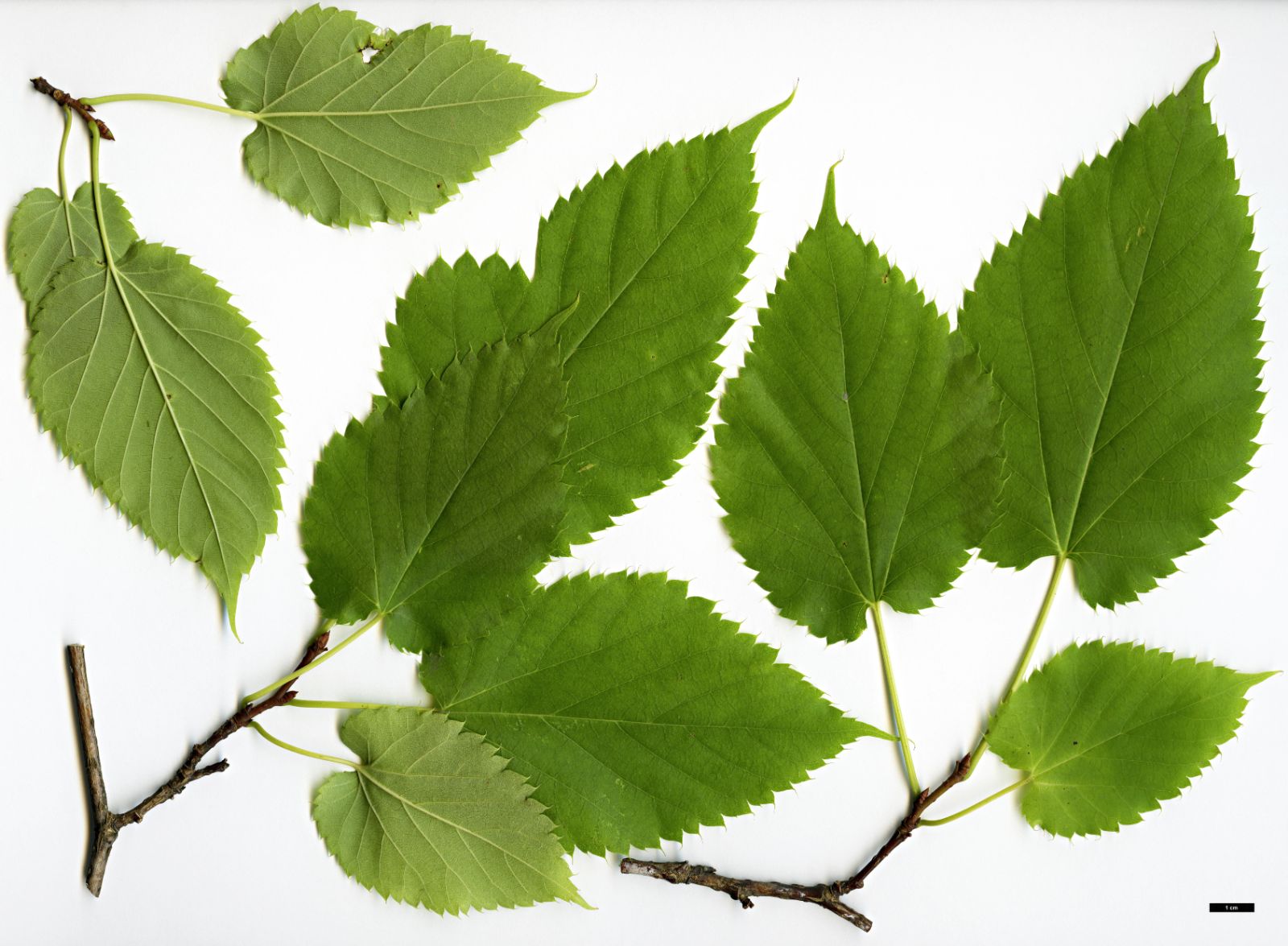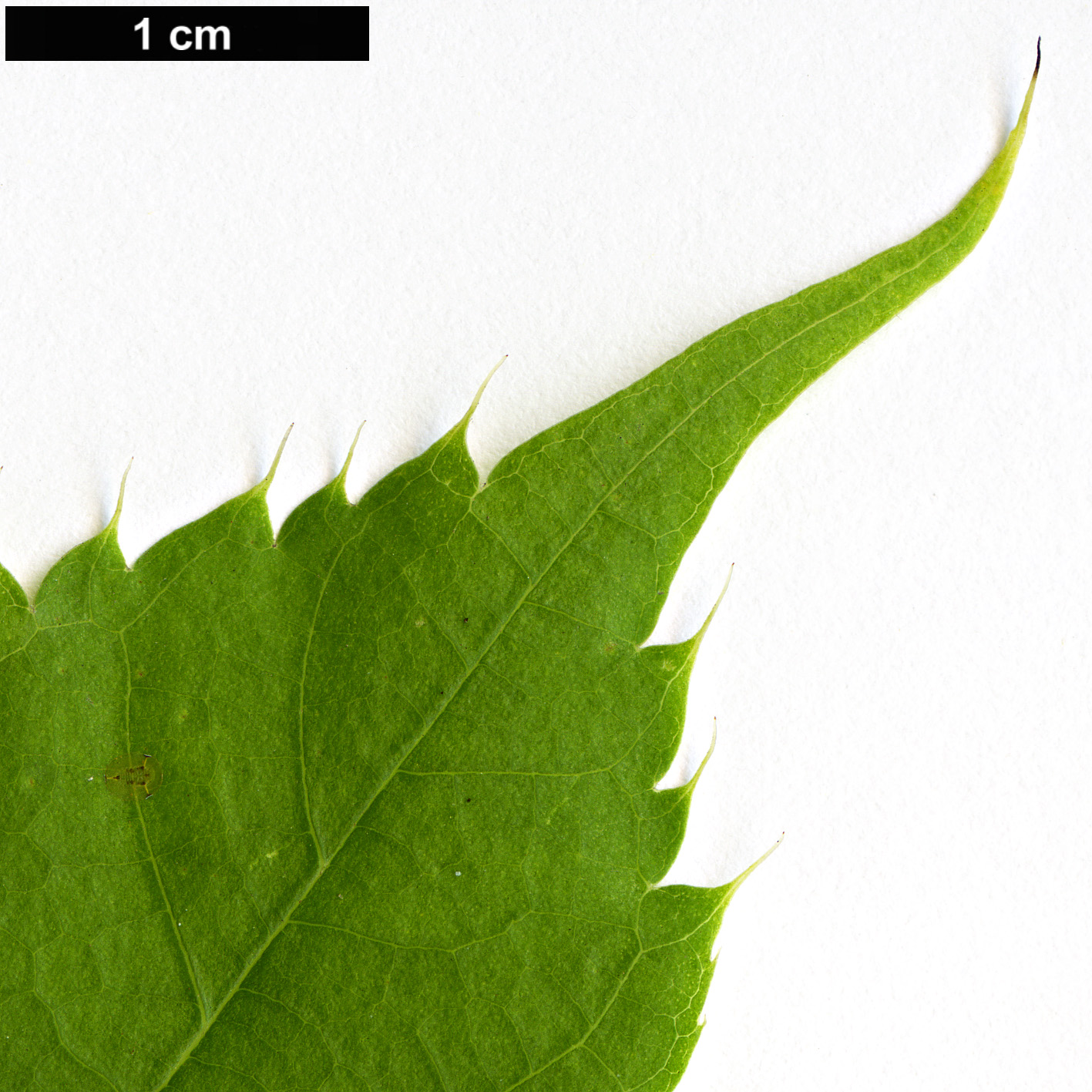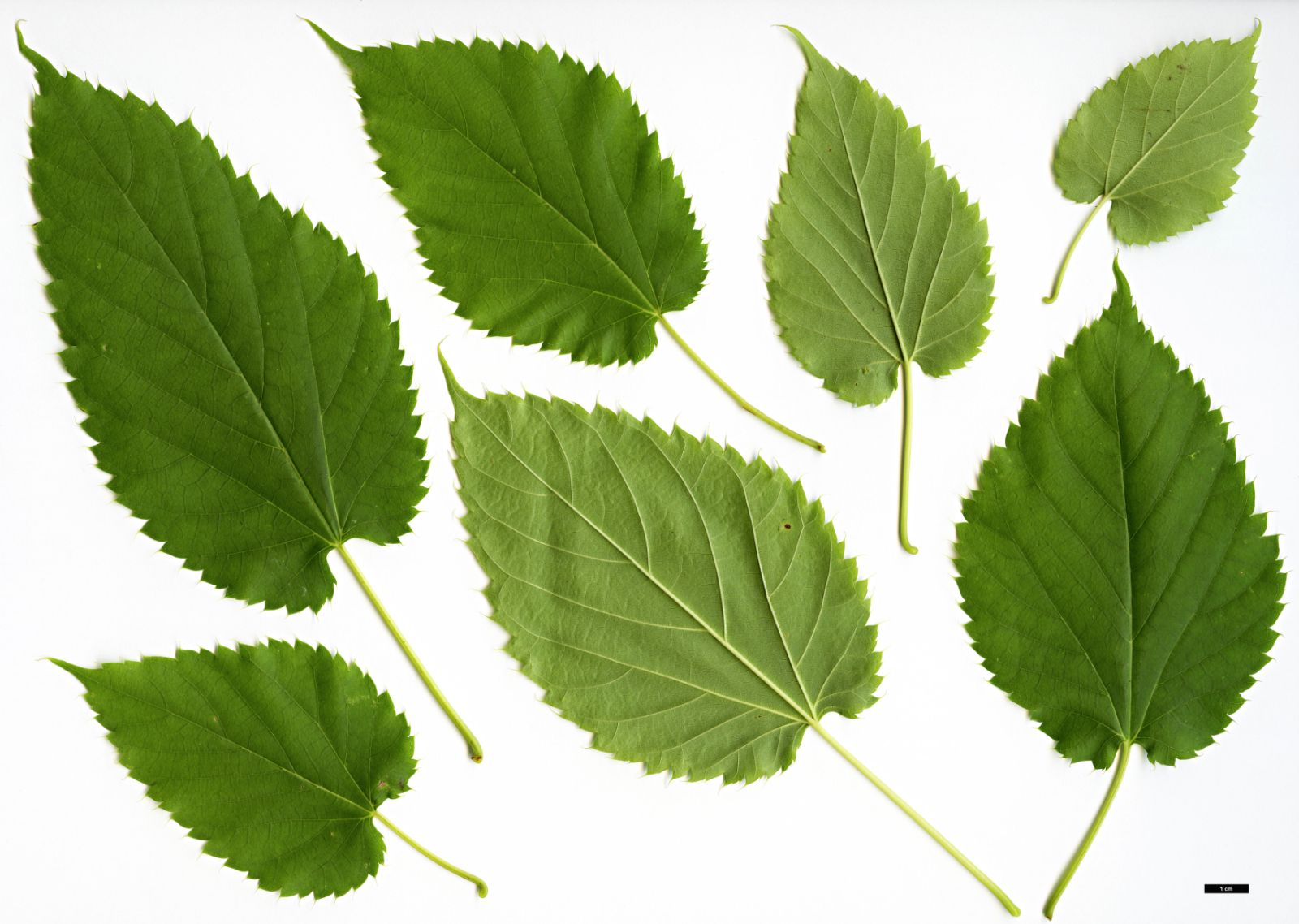Morus mongolica
Sponsor
Kindly sponsored by a member of the International Dendrology Society.
Credits
Tom Christian & Peter Coles (2022)
Recommended citation
Christian, T. & Coles, P. (2022), 'Morus mongolica' from the website Trees and Shrubs Online (treesandshrubsonline.
Genus
Common Names
- 蒙桑 (meng sang)
Synonyms
- Morus alba var. mongolica Bureau
- Morus barkamensis S.S. Chang
- Morus deqinensis S.S. Chang
- Morus mongolica var. hopeiensis S.S. Chang
- Morus mongolica var. longicaudata Z.Y. Cao
- Morus mongolica var. pubescens S.C. Li & X.M. Liu
- Morus mongolica var. rotundifolia Y.B. Wu
Small trees or shrubs to 6 m; dioecious. Bark greyish or blackish brown, furrowed. Branches maturing dark grey to greyish black; branchlets dark red; lenticels elliptic, pale. Winter buds grayish brown, ovoid or conical, small. Stipules liner-lanceolate, 1.5–4 cm, pubescent. Leaves lanceolate to broadly ovate, 6–15 × 5–8 cm, thin, papery, glabrous on both surfaces or with sparse hairs on veins and in axils beneath; base cordate; margin triangular-serrate with occasional doubly serrate teeth, each tooth terminating in a bristle 0.8–3 mm long; apex short-acuminate. Male inflorescences 1 per node, 2–5 cm, peduncle 1–2 cm; male flowers with ovate, dark yellow calyx lobes, margins adaxially hairy, anthers 2-loculed, longitudinally dehiscent. Female inflorescences 1 per node, short-cylindric, 1–2 cm, peduncle 1–3 cm; female flowers with oblong, glabrous to sub-glabrous calyx lobes, style long, stigma papillate, 2-branched. Syncarp maturing white, red or purple, 1–1.5 cm. Flowering early spring, fruiting spring to mid summer. (Wu, Zhou & Gilbert 2003; Razdan & Dennis Thomas 2021).
Distribution China N Anhui, NE Guangxi, Guizhou, Hebei, Heilongjiang, Henan, Hubei, NW Hunan, Jiangsu, Jilin, Liaoning, Nei Mongol, Shaanxi, Shandong, Shanxi, Sichuan, SE Xizang, Yunnan Japan North Korea South Korea Mongolia
Habitat Forests, especially in mountains; 500–3500 m asl.
RHS Hardiness Rating H5
In a genus of lookalikes Morus mongolica offers a modicum of relief: it is recognisable on account of its distinctive leaf margin, with relatively large, regular teeth, each ending in a prominent bristle. In addition to this signature it can also be noted for the thin, papery texture of its relatively small leaves, which along with the petioles are glabrous on both surfaces. This pinprick of hope must be followed by the usual caveats associated with identification of mulberries generally: leaves on young shoots should be ignored, and vigorous young plants should be allowed time to develop before being subject to a taxonomist’s scrutiny. Nevertheless, the authors of the Flora of China account note that these characters make M. mongolica ‘easy to recognize [sic.], in contrast to the varieties that have been proposed within it’ (Wu, Zhou & Gilbert 2003). We follow those authors, and the treatment in Plants of the World Online, in consigning those varieties to synonomy.
Originally described as a variety of M. alba in 1873, Bureau based this taxon on the Abbé David’s collections of c. 1864. Schneider elevated it to species rank in Plantae Wilsonianae (Vol. Ill, p. 296) having seen further material, and following Wilson’s introduction of 1907 (W 10) (Sargent 1913; Bean 1981). Material traceable to W 10, collected in western Hubei, may still be in cultivation in North America (Arnold Arboretum 2022) and this may also be the source of the oldest and largest trees known in Europe, including the UK and Ireland champion, measuring 14 m × 46 cm dbh in 2014, growing at the University of Cambridge Botanic Garden, England (Tree Register 2022). This may be the same tree mentioned in later editions of Bean, which measured 10.6 m × 19 cm dbh in 1969 (Bean 1981). It is rarely planted.







